California passes polarizing energy bill that could help rescue gas plants
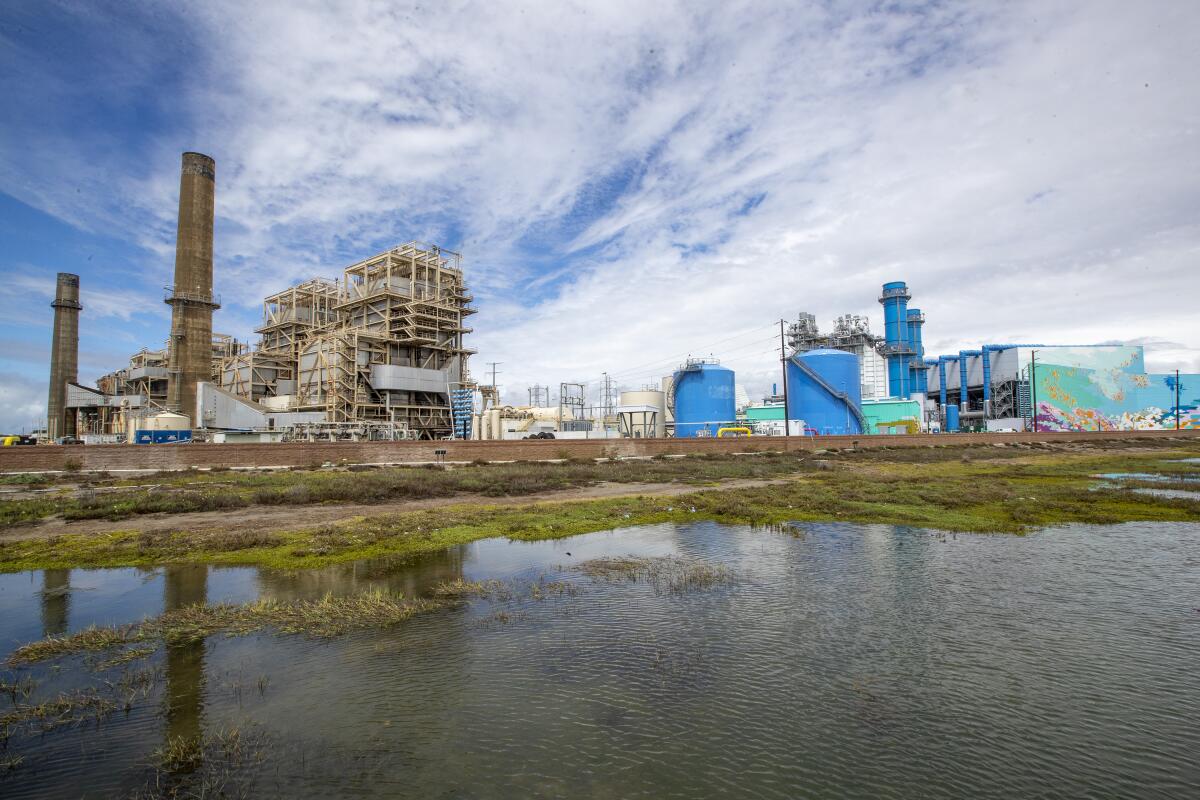
- Share via
This is the June 30, 2022, edition of Boiling Point, a weekly newsletter about climate change and the environment in California and the American West. Sign up here to get it in your inbox.
California lawmakers passed a sweeping, polarizing energy bill last night, making it easier for state officials to buy electricity from beachfront gas plants and diesel generators, and to approve solar and wind farms over the objections of local governments.
That’s a mouthful, so let’s back up a minute.
The Golden State has an energy crisis — not like the sudden, acute crisis two decades ago, when market manipulation prompted massive blackouts, but rather a slower, longer-lasting crisis in which California has had more and more trouble keeping the lights on. It’s a crisis made worse by climate change — hotter heat waves, higher electricity demand, hydropower dams hammered by drought — and also by California’s response to climate change, which involves shutting down fossil fuel plants and replacing them with solar and wind farms, which aren’t quite as good at supplying electricity right when it’s most needed.
Making matters worse, in the view of many energy experts, is the Public Utilities Commission — the state agency responsible for approving power purchases by monopoly utility companies such as Southern California Edison and Pacific Gas & Electric.
The commission has been scrambling lately to order those companies to secure supplies that can keep the lights on during hot summer nights, when solar farms stop generating. But for years, critics say, the agency was asleep at the wheel, fretting about saddling utility ratepayers with unnecessary costs even as it became clear that a power supply crunch loomed — a crunch that would only get worse with the planned closure of several gas-fired power plants and the Diablo Canyon nuclear reactors.
Well, ratepayers might have been spared for a while — but now the bill has come due.
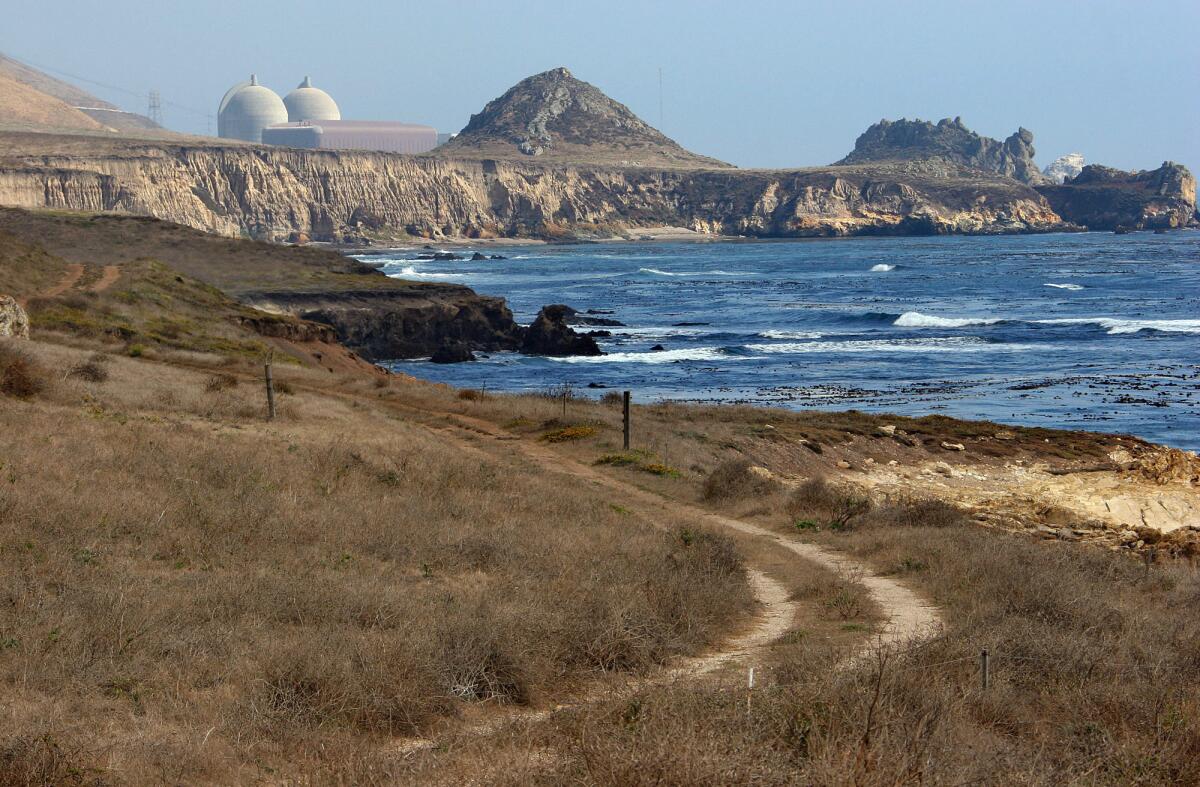
The legislation approved last night by state lawmakers — in a 27-8 vote by the Senate and a 57-13 vote by the Assembly — will direct billions of dollars toward emergency power supplies, some clean and some dirty, over the next few years, assuming Newsom signs it. (He will, possibly as soon as today.) The bill loosens California’s strict environmental protections to get that done.
For more details, read the story I wrote ahead of the vote. And please consider subscribing to The Times to support my reporting.
For the purposes of this newsletter, a few additional observations.
Watching last night’s debate in the Legislature, it quickly became clear that Newsom’s office had persuaded key environment-focused lawmakers to support his proposal — over the fierce opposition of climate activists, who see it as a fossil fuel boondoggle.
State Sen. Henry Stern (D-Los Angeles) — an ardent environmentalist who has fought to close the Aliso Canyon gas storage field — acknowledged the bill will allow state officials to buy “some emergency fossil fuel resources.” But the Newsom administration, he said, has insisted those resources will only be used to keep the lights on as a last resort — and he trusts that will be the case.
Stern also said the governor’s office convinced him the bill won’t allow four Southern California gas plants to stay open after 2023, at least not without additional action by state regulators — a point disputed by climate activists, who read the bill differently.
“Let’s be clear again: This bill does not extend the life of the dirtiest [gas] plants and of Diablo Canyon,” Stern said on the Senate floor. “Those are tough decisions we’re going to have to wrestle with. But we’re not doing that tonight.”
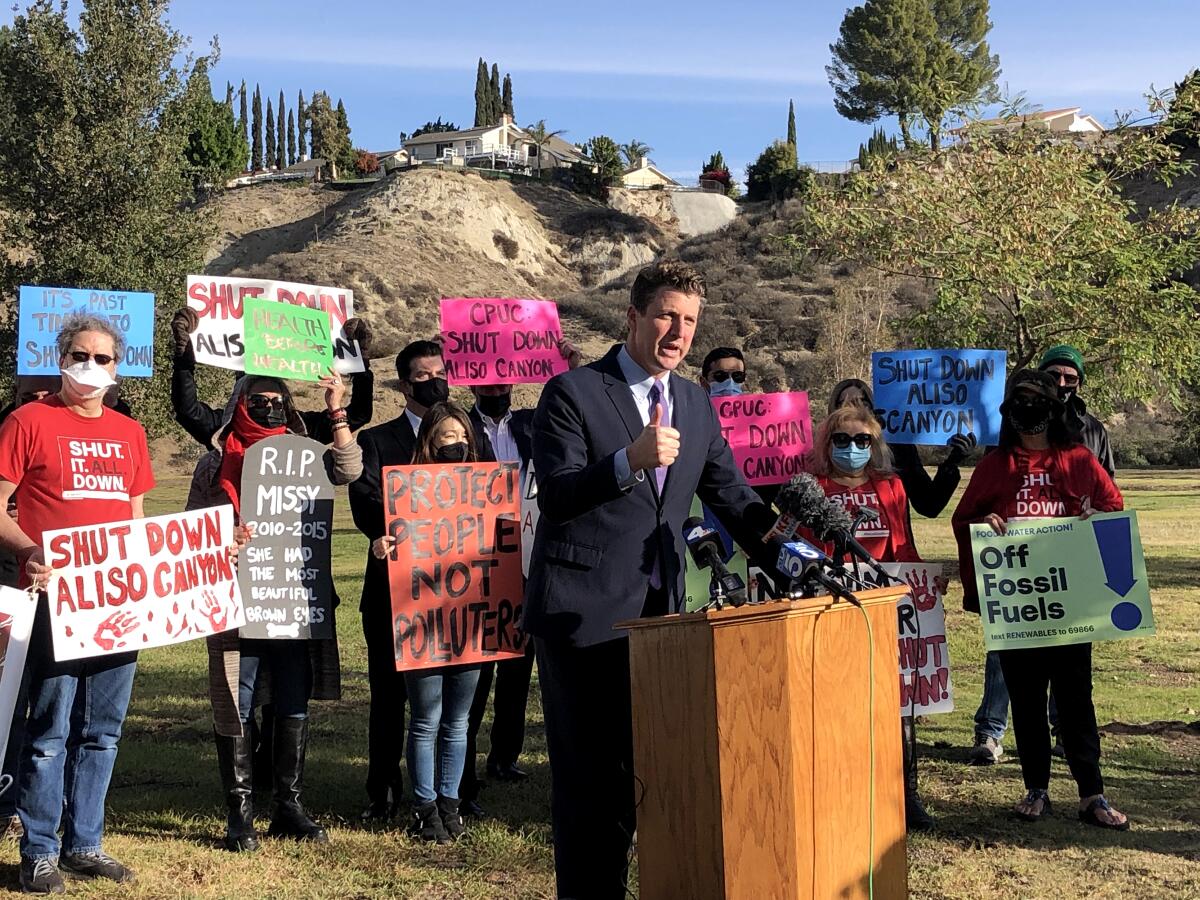
Speaking of Diablo Canyon, the bill sets aside $75 million to help keep the nuclear plant open past 2025, per Nadia Lopez at CalMatters, although it’s far from clear whether that will happen. Diablo Canyon operator PG&E faces a July 5 deadline to apply for much larger amounts of federal funding to help keep the plant open, and the company recently asked for a 75-day extension.
Anyway, back to Stern. As far as he’s concerned, passing the bill — fossil fuels and all — was better than doing nothing.
“We’re trying to get ahead of a crisis,” he said. “If we don’t manage this crisis, utilities around the state of California will do whatever they have to do. And in the past, that has meant firing up dirty [gas] plants in disadvantaged communities.”
Still, Stern said he struggled with how to vote, as did other climate-friendly lawmakers. State Sen. Dave Min (D-Irvine), who has pushed to end offshore oil drilling, said the bill “does not appear to emphasize green energy.” But he still voted for it, saying the Newsom administration had worked hard to assure lawmakers it wouldn’t lock in long-term reliance on fossil fuels. State Sen. Nancy Skinner (D-Berkeley) urged her colleagues to vote for the bill even as she said it includes “things to love and not to love.”
It was a similar story in the other chamber, where Assemblymember Bill Quirk (D-Union City) voted “aye” after saying, “It’s a lousy bill, but it’s the best hope we have for keeping the lights on.” Assemblymember Phil Ting (D-San Francisco) said the legislation “could go further” to prioritize clean energy, calling it “the beginning of a discussion” that will continue later this summer.
How did the Newsom administration persuade all these skeptical Democrats to sign off on its controversial plan? Several lawmakers said the governor’s office agreed to clarify the bill’s intent to prioritize clean energy, but only after its passage — either through a letter from legislators, a signing statement from Newsom, or — if needed — “cleanup” legislation at a later date.
As far as Kim Delfino is concerned, cleanup legislation is badly needed. She’s an environmental consultant who helped organize opposition to the bill among climate groups, and when I texted her about the idea of a “clarifying letter,” she was skeptical.
“A clarifying letter doesn’t have the force of the law,” she told me.
Also skeptical: State Sen. Ben Allen (D-Santa Monica), whose district includes Redondo Beach Generating Station, one of the four beachfront gas plants that were originally supposed to shut down in 2020, and are currently slated for closure in 2023.
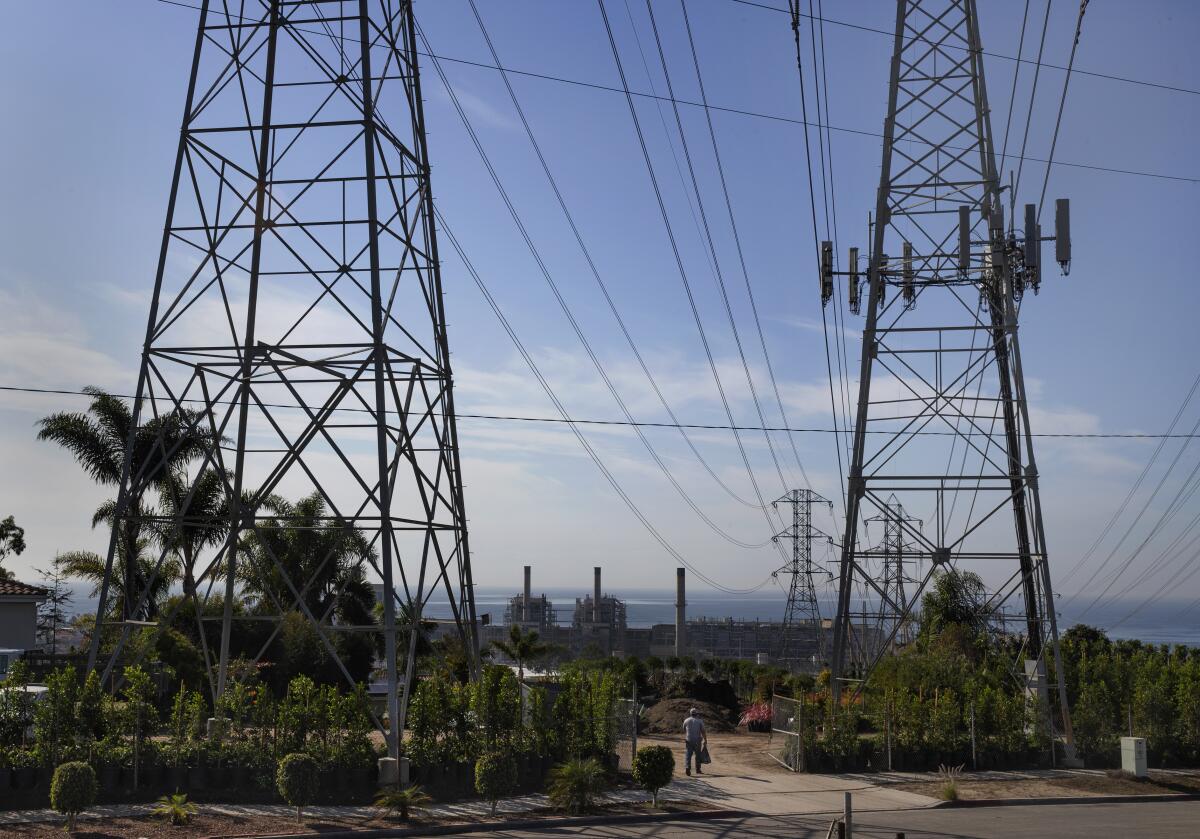
Allen ended up voting for Newsom’s proposal, but only after excoriating state officials for promising to close the plant “over and over again,” only to keep extending the deadline. He called the facility “a total eyesore” that is “incredibly unreliable” — a reference to the fact that Redondo and other aging gas plants have at times broken down during heat waves, when they’re needed most.
“They’re starting to use it to film Cold War-era movies because the equipment is so wonderfully evocative of 1950,” Allen said.
State Assemblymember Al Muratsuchi (D-Torrance), whose district also includes the Redondo Beach plant, was even more critical, calling Newsom’s proposal “a crappy trailer bill that was dumped on us on late Sunday night, and we have to vote on this three days later.” He described the bill as “a rushed, unvetted and fossil fuel heavy-response” to the challenge of keeping the lights on.
But Muratsuchi still voted for the bill, implying the governor’s office or legislative leadership would be unhappy if he didn’t.
“In the words of Marshawn Lynch, ‘I’m here because I don’t want to get fined,’” he said.
Other lawmakers supported the bill more enthusiastically. They included state Sen. Scott Wiener (D-San Francisco), who praised the provision allowing solar and wind energy developers facing opposition from local governments to seek state approval instead. As I wrote in my earlier story, local opposition is a growing obstacle to renewable energy in California and across the country.
“This bill will cut through that in so many ways, and make it much easier and faster to site and build these large-scale energy projects,” Wiener said. “That is what is going to put an end to fossil fuel reliance in the state of California.”
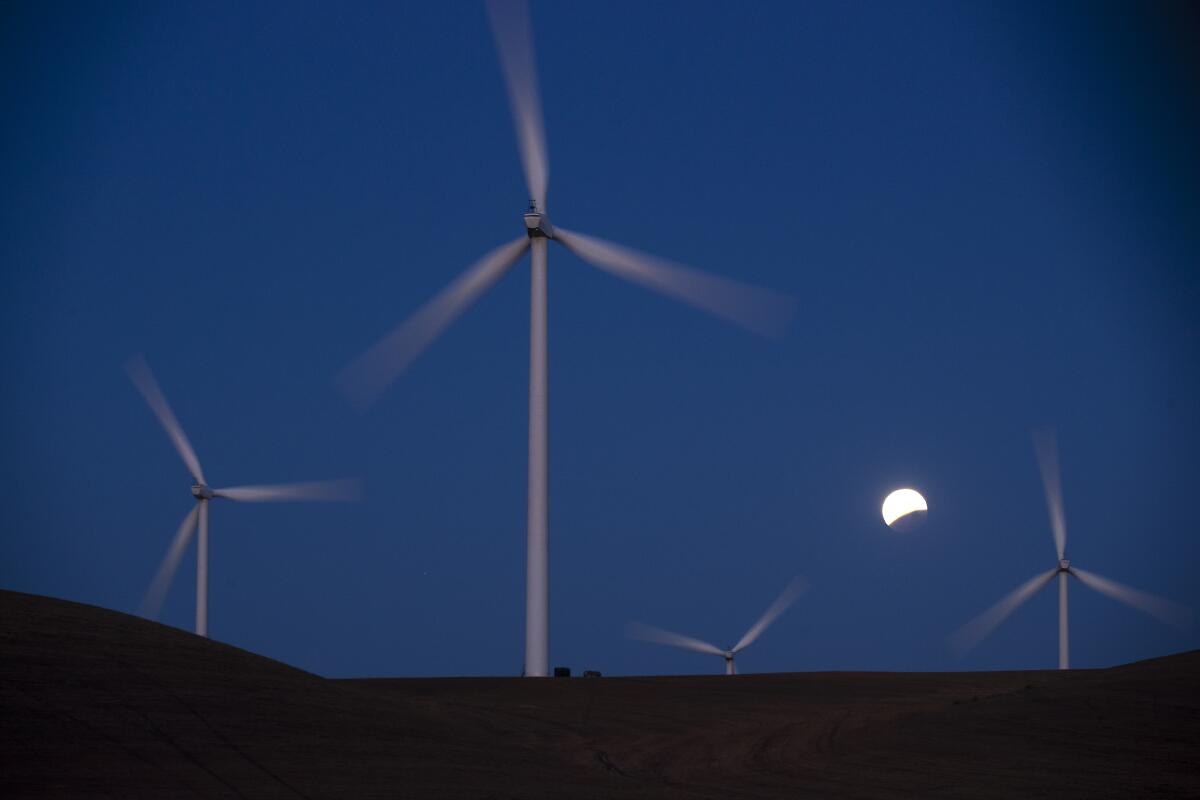
Not surprisingly, some legislators didn’t react so positively to state government taking away local control. State Sen. Jim Nielsen (R-Red Bluff) mentioned opposition from city and county governments to help explain his “no” vote. And Assemblymember Rebecca Bauer-Kahan (D-Orinda), who ultimately didn’t cast a vote either way, said Newsom’s plan fails to allow local communities to determine the right balance between building badly needed renewable energy projects and maintaining open space.
Perhaps the most interesting comments, though, came from state Sen. Shannon Grove (R-Bakersfield), a staunch Trump supporter. She taunted her Democratic colleagues, gleefully describing the bill as an acknowledgement that California needs fossil fuels to keep the lights on, and that without gas-fired power plants, “you will not be able to flip the switch to get electricity.”
Various Democrats quickly disagreed, and indeed, there’s plenty of evidence 100% clean electricity is possible, if not tomorrow or next year then likely next decade. The challenge, as I’ve written previously, is getting there — without blackouts along the way.
That’s the needle California is struggling to thread right now. The world is watching to see if we get it right.
On that note, here’s what else is happening around the West:
TOP STORIES
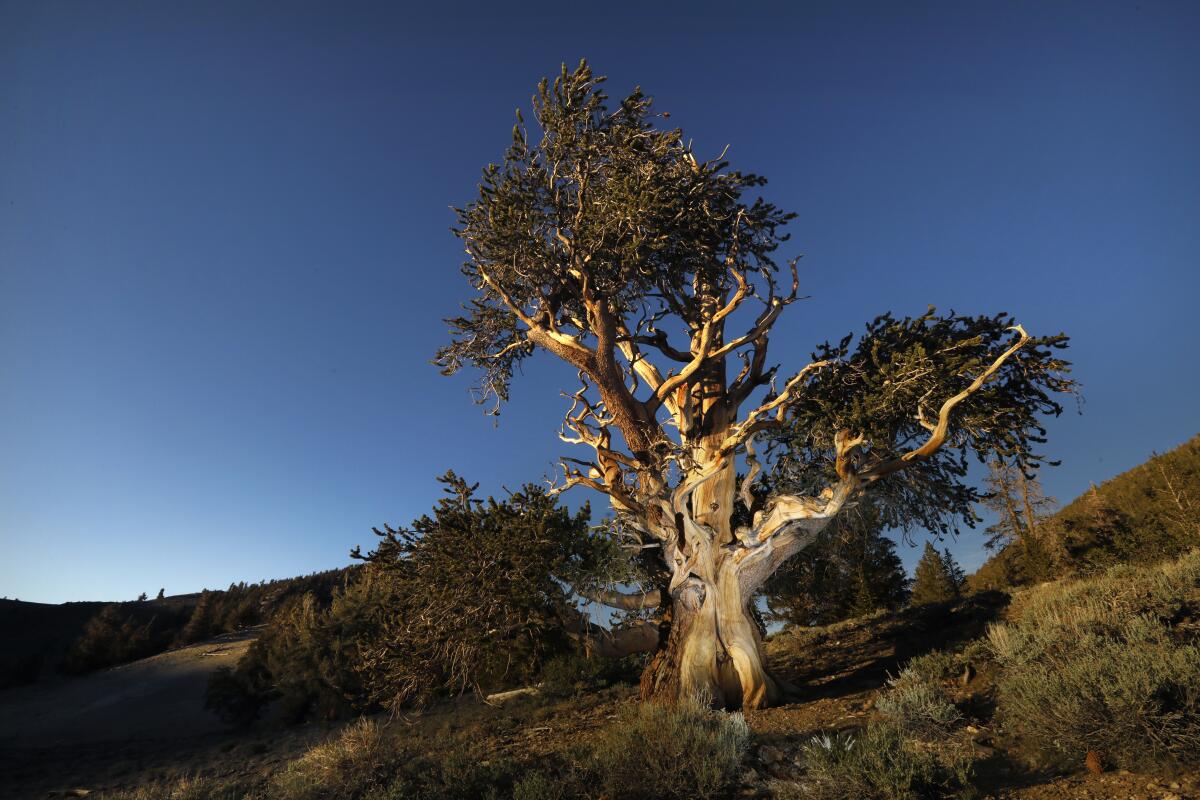
Ancient bristlecone pines can survive almost anything — but rising temperatures, worsening drought and bark beetles are starting to kill the world’s oldest trees. The Times’ Louis Sahagún and Carolyn Cole journeyed to California’s White Mountains with scientists who are working to protect the iconic pines — the oldest of which, Methuselah, has been growing its gnarled limbs for 4,853 years. Elsewhere in the West, increasingly extreme drought and heat are fueling larger outbreaks of Mormon crickets — giant insects that ravage crops and feast on their own dead, Claire Rush reports for the Associated Press. Climate change has also helped mosquitoes gain a foothold in California. Here’s what you can do to protect yourself, via my colleague Karen Garcia.
The Colorado River is once again flowing to its endpoint at the Gulf of California — sort of. The Times’ Ian James, Luis Sinco and Albert Brave Tiger Lee teamed up for a beautiful story and video about the ecological revival underway as pulses of water reach the Colorado River Delta. The less water humans use, the easier it will be to do that kind of restoration — and in a good sign, Southern California cities are finally cutting back on water use, Hayley Smith reports. Other states have different strategies to balance water supply and demand. In Arizona, lawmakers approved a $1-billion plan to augment supplies but did nothing to stop rural groundwater over-pumping, the Arizona Republic’s Brandon Loomis writes. And in Utah, powerful cities and water districts keep hamstringing efforts to save water, ProPublica’s Mark Olalde reports. Even a bill to study leaky pipes couldn’t get passed.
Fires started by humans spread faster, burn hotter and destroy more trees than those caused by lightning strikes. That’s according to new research from scientists at UC Irvine; here’s the story from my colleague Corinne Purtill, who writes that lightning tends to spark wildfires in humid conditions when it’s more difficult for flames to spread, whereas humans “light campfires, flick cigarettes and use machinery all year long, including when it’s dry and windy.” Not great, Bob! This helps explain why California’s largest private landowner, lumber giant Sierra Pacific Industries, is preemptively closing its Golden State lands to the public this summer, citing wildfire risk, as The Times’ Felicia Alvarez reports. On the upside, new research could make it easier to forecast wildfire season severity and monsoonal rainfall months in advance. Details here from Maddie Stone at the Washington Post.
WATER IN THE WEST
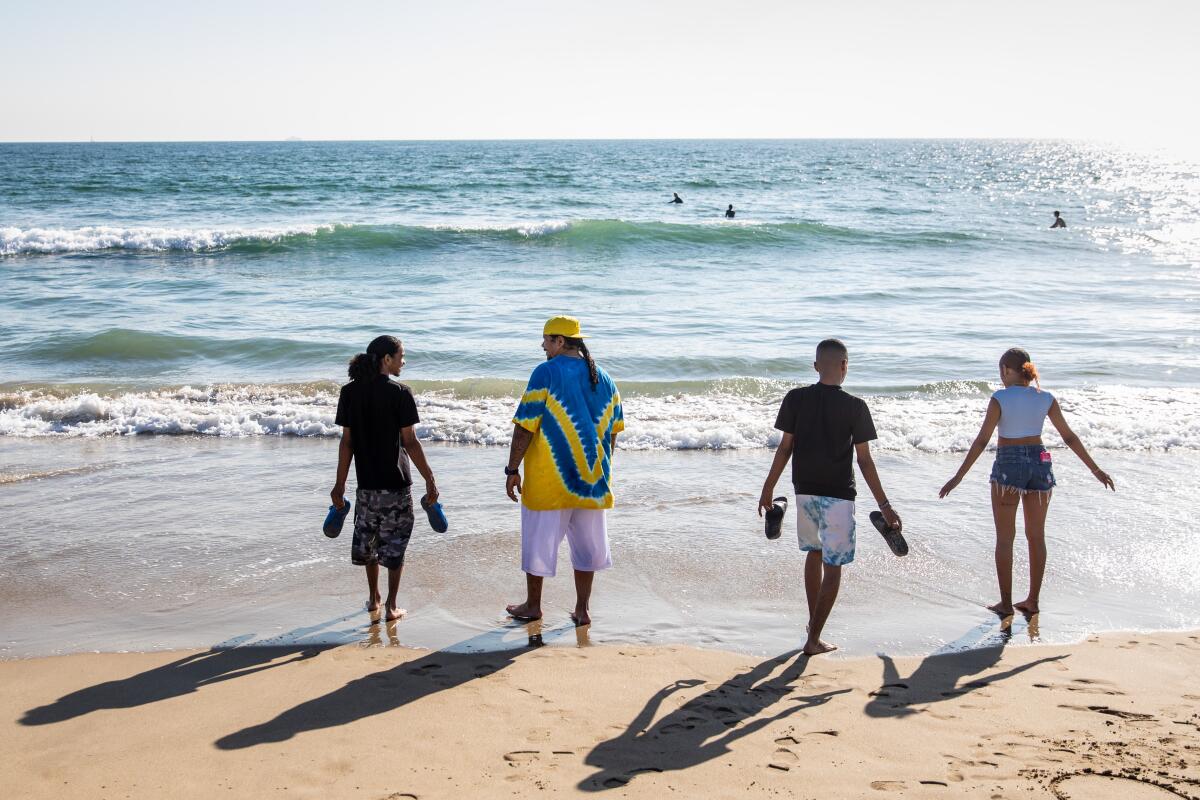
Los Angeles County is returning Bruce’s Beach to descendants of the Black couple kicked out nearly a century ago. “To our knowledge, this is the first time the government has returned property to a Black family after acknowledging it had been improperly taken,” George Fatheree, a lawyer representing the Bruce family, told The Times’ Rosanna Xia after a unanimous vote by the L.A. County supervisors, adding, “We’re hopeful that it will not be the last.” For more details on the county’s plan, see Rosanna’s earlier story. Rosanna also wrote about Heal the Bay’s latest report card tracking California’s cleanest and dirtiest beaches — and also the health risks of wading into Los Angeles County rivers and creeks. “When we’re talking about coastal water quality, we need to think of it as a watershed issue. We need to address this from summit to sea,” Heal the Bay’s Tracy Quinn says.
“Are riverbeds a category of land like any other, subject to privatization and enclosure? Or are they fundamentally unlike land: shared spaces for spiritual renewal and joy, rendered so precious in the West by their scarcity that it would be unjust to deny the public their pleasures?” So asks Ben Goldfarb in a fascinating High Country News piece on a court case that could revolutionize river access in Colorado, where private landowners control access to many riverbeds. In another access story, Brian Oaster writes for High Country News that Willamette Falls — the West’s biggest waterfall by volume — is not open to the public.
Environmentalists and local property owners are suing to block a planned $2.5-billion expansion of Pacheco Reservoir in California’s Santa Clara County. Critics argue the Santa Clara Valley Water District failed to conduct the necessary environmental reviews for a project they say would destroy wildlife habitat and cultural sites, my colleague Nathan Solis reports; supporters say the project is needed to assure adequate water supplies and would actually benefit a species of steelhead trout. Public utilities in the Pacific Northwest, meanwhile, have spent more than $2 million in ratepayer money on a public relations campaign to convince policymakers not to tear down four dams on the Lower Snake River in Washington, Hal Bernton reports for the Seattle Times.
POLITICAL CLIMATE
Los Angeles could become the biggest U.S. city to ban new gas stations. Details here from the Guardian’s Dani Anguiano. Of course, reducing our dependence on gasoline will be a lot more challenging, especially given the political power of the oil industry. Look no further than this story by the Press Democrat’s Mary Callahan, about a state lawmaker — Assemblymember Jim Cooper (D-Elk Grove) — who killed a bill that would have required California’s powerful public employee pension funds to divest from fossil fuels, after previously receiving a bunch of campaign money from oil and gas firms. Lawmakers are more focused on gasoline prices, striking a $9.5-billion deal with Gov. Gavin Newsom to send tax refunds to Californians, as The Times’ Taryn Luna reports.
California is the nation’s second-largest cement producer, and cement accounts for 2% of its greenhouse gas emissions. A law passed last year requires the industry to reach net-zero emissions by 2045, and several new bills proposed by lawmakers are designed to help make that happen, according to Nadia Lopez at CalMatters, who wrote a super interesting story on what cement producers are doing to clean up their act. It’s a crucial issue globally, too; not only have cement emissions doubled over the last 20 years, the carbon intensity of cement production is actually going up, not down, per Seth Borenstein at the Associated Press.
Gold mining executive Ben Mossman — who’s currently on trial in Canada on charges related to water contamination — is trying to reopen a long-shuttered Sierra Nevada gold mine with a toxic history. My colleague Hailey Branson-Potts talked with Grass Valley residents fighting to block Mossman’s plan. “Water is our gold,” Christy Hubbard said. “We’re at the very center of the drought. We’re on the front lines of climate change here. We live in a forest, for heaven’s sake, that’s been really hit by drought.”
ENERGY, CLEAN AND DIRTY
The closure of a big coal plant in New Mexico, originally planned for this month, has been delayed through at least the end of the summer as electricity demand outstrips supply. The difficulty of shutting down San Juan Generating Station illustrates the challenges facing the Land of Enchantment’s 100% clean energy law, as Jonathan Thompson writes for High Country News. His story features an interesting appearance by Western States and Tribal Nations, an advocacy group funded in part by fossil fuel companies that I wrote about a couple years ago. We also shouldn’t forget that the extreme heat driving up demand for electricity has lots of other dangerous impacts, starting with human health risks. Other impacts are less obvious. Just last week, for instance, extreme heat caused a BART train to derail in Northern California, my colleague Felicia Alvarez reports. Expect more of this.
Scientists have found small levels of several chemicals linked to cancer in natural gas delivered to homes. Here’s the story from Elena Shao at the New York Times. The research took place in the Boston area, but it’s relevant to the ongoing debate over phasing out gas heating and stoves in California. In other gas news, the California Public Utilities Commission ordered Pacific Gas & Electric to pay a $1.27-million fine for failure to promptly fix pipeline safety issues; separately, new data shows that heat-trapping methane emissions are soaring around the world, including in the Permian Basin in Texas and New Mexico (stories by Olivia Wynkoop at Bay City News Foundation and Steven Mufson at the Washington Post). In one more pollution story, Adam Mahoney wrote a powerful piece for Grist and High Country News about a Wilmington family that has seen three generations stricken by cancer in one of Southern California’s most contaminated places, surrounded by oil refineries, ports and heavy truck traffic.
Consultants working for Florida Power & Light — a subsidiary of NextEra Energy, America’s biggest power company — covertly monitored a journalist who had written critically about the utility, sharing his social security number and other sensitive info with an FPL executive. Here’s the absolutely insane story from the Orlando Sentinel’s Annie Martin and Floodlight’s Mario Alejandro Ariza. I’m sharing this story here mostly because NextEra also does a lot of business in California; it operates a bunch of renewable energy facilities and is also trying to build a pumped hydropower plant just outside Joshua Tree National Park. In other surprising energy news, it turns out a secretive solar farm in Colorado is powering a cryptocurrency mining operation — and the company behind it all is based in El Segundo, Calif., also home to the L.A. Times, the Colorado Sun’s Mark Jaffe reports.
ONE MORE THING

Comedian John Oliver hosted a lengthy segment on the Colorado River in the latest episode of “Last Week Tonight.” You should check it out. The segment ends with an appearance from God — played by “Succession” star Brian Cox — who has a blunt message for us: “I want humans of all faiths to come together and act like rational f***ing adults when it comes to water use.”
Oliver’s segment is impressively detailed, although I do have one critique: He neglects to mention the Imperial Irrigation District, the powerful California agency that controls more Colorado River water than anyone. For more details, see my recent story.
We’ll be back in your inbox next week. If you enjoyed this newsletter, please consider forwarding it to your friends and colleagues.




